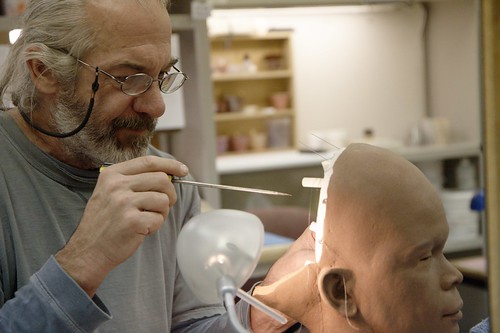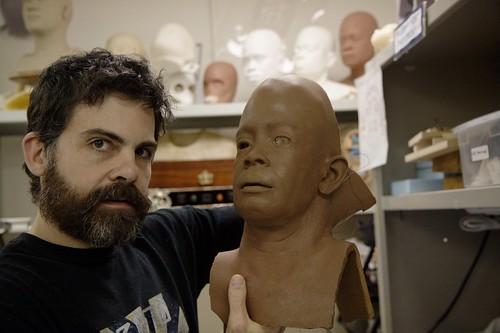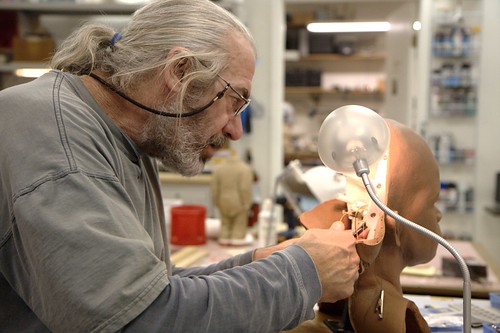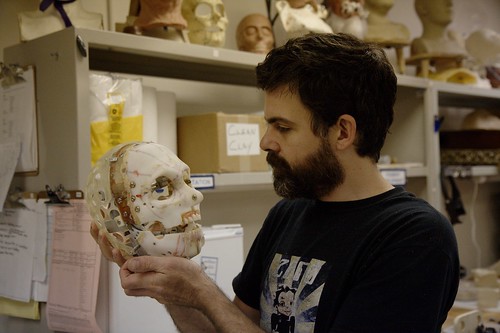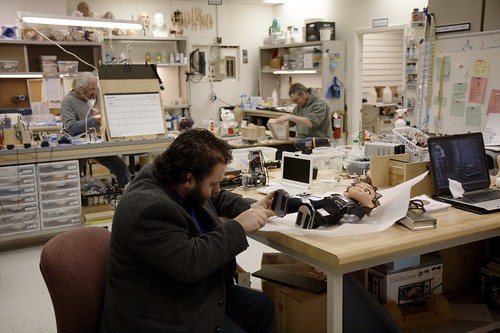Ultracap Update
After prototyping a cell-balancing circuit for my robot power supply based on Maxwell 350F Ultracaps, I discovered the original choice of the TI TLC25L4CN low-voltage op-amp was not a good one. The little chip just couldn’t deliver enough current to balance the cap voltages in any reasonable amount of time. The peak output of the prototype was about 4 ma. So after spending a couple of hours searching for an op-amp that could operate at low voltage and put out a substantial amount current, I came up with the TI TLV4112IP high-output-drive op-amp. At last week’s RBNO, I built a second prototype and… it works! The new op-amp outputs up to 300 ma easily. Using the test circuit, I set it up with one Ultracap at 1v and the other at 2v. In little over a minute, the system balanced with both caps at about 1.6v. Next Tuesday, I’ll put together a more complete prototype with four Ultracaps and three cell balancers.
The cell-balancer has also proven to be a good way of trying out the GPL Electronic Design Automation (GEDA) package. I’ve been using the schematic capture program gschem primarily (screenshots) and have been asking lots of stupid, new-user type questions on the mailing list. They’ve been very patient with me so far and I’m begining to get the hang of it. It turns out good-looking schematics. Once I finalize the power supply, I’ll post a link to the GEDA files for anyone who might want them.
Cats in the garage
The abandoned mother cat and two kittens we brought home a few weeks ago are still with us. We know a lot more about them now. The kittens were much younger than we first thought. We’ll probably hang on to them until the kittens are a bit older. Susan has settled on names. The half-siamese mother cat is Sophie, the black kitten with the missing toe is Zippy (though she insists on spelling it “zippie”), and the tailless calico kitten is Callie. No luck finding a home for any of them yet. Callie is probably too emotionally disturbed to make a good pet but we have located a group called Barn Cats International that assists with finding homes for problem cats on farms and ranches where they can live with minimal contact with humans. Hopefully we’ll be able to find good homes for the other two. If anyone in the Dallas/Ft. Worth area needs a cat, let me know!
Nigritude Ultramarine contest outcome
The contest ended on July 8th. Thanks to everyone who linked to my site, especially, Bram. His link resulted in more hits on my site during the contest period than anything except Google itself. Feel free to remove those links now. I’ll probably leave the page up until the domain expires. I ended up in position 6 in the final results. The winner was a blogger who apparently won primarily through old fashioned Google bombing. Oh well, my site received a sort of honorable mention prize, the Judge’s Choice Award. My prize is one of those teeny, tiny “James Bond Stealth digital cameras” like you see on ThinkGeek. I’ll post a photo as soon as I get it talking to my Linux box (it only comes with Windows software but it has a USB cable so I’m hoping I can just mount it like a little USB drive).
We’ve been pretty busy at the office doing website design jobs. The lease on our office space is up soon and we’re deciding whether to stay put or move to new space. Even if we move, we’ll stay in Dallas and probably in the same general area.

